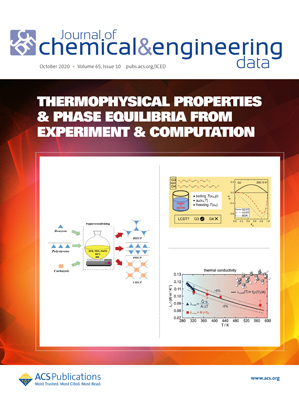|
Autors/es
Jovell, Daniel ; Gómez, Sergi B.; Zakrzewska, Malgorzata E.; Nunes, Ana V.M.; Araújo, João M.M.; Pereiro, Ana B.; Llovell, Fèlix ; Gómez, Sergi B.; Zakrzewska, Malgorzata E.; Nunes, Ana V.M.; Araújo, João M.M.; Pereiro, Ana B.; Llovell, Fèlix
|
Abstract
Within the context of the development of novel separation processes to separate hydrofluorocarbons (HFCs) in the use of refrigerants, this work combines new and recent experimental data with accurate modeling using the soft-SAFT equation of state to assess the feasibility of the absorption of R134a in new fluorinated ionic liquids (FILs) and deep eutectic solvents (DESs). The study is divided in three parts: in a first stage, the solubility of four F-gases with a different number of fluorine atoms, R14, R23, R32, and R134a in the benchmark FIL [C2mim][Tf2N], was measured at low pressures. The results have been modeled with soft-SAFT, including R125 for comparison, in an effort to relate the changes of solubility with the structures of these gases. On the basis of the higher solubility of R134a, this refrigerant has been selected to develop soft-SAFT models capable of describing its solubility in a variety of alternative FILs. An analysis of the binary parameters utilized, remarking their differences related to the molecular model of each FIL, is given. Finally, the study is completed by the synthesis of six DESs based on the combination of [C2mim][Cl] as hydrogen-bond acceptor (HBA), and [HC4F9CO2] and [HC4F9SO3] as hydrogen-bond donors (HBDs) to study the solubility of R134a from an experimental–theoretical approach. New experimental data, including density, viscosity, and F-gas solubility, are provided for these systems. The more rigorous two-compound approach has been used to describe the DESs, increasing the transferability of the models. A novel methodology is proposed to obtain the description of the solubility of R134a in [C2mim][Cl]:[HC4F9SO3] based on the transferability of the soft-SAFT parameters. From the theoretical description, it is possible to predict the refrigerant solubility at different DES proportions, as well as the density of the pure DES.
|

WoS
Scopus
Altmetrics
 
|
